Welcome to our free classical music site

Do you write about classical music? Are you a blogger? Want to team up with Classical Connect? Send us a message, let's talk!

Do you write about classical music? Are you a blogger? Want to team up with Classical Connect? Send us a message, let's talk!
August 18, 2014. Salieri, Enesco and Debussy. Antonio Salieri was born on this date in 1750 in Legnago, Veneto. His brother, a student of Giuseppe Tartini, was Antonio’s first music teacher. Their parents died when Salieri was 14 and he ended up in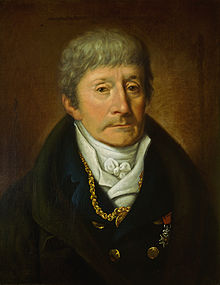 Venice, the ward of a local nobleman. He continued his musical studied in Venice and soon was noticed by Florian Leopold Gassmann, a chamber composer to the Austrian Emperor Joseph II. In 1766, Gassmann brought Salieri to Vienna. Gassmann gave the youngster composition lessons and, more importantly, brought him to the court to attend the evening chamber concerts. The Emperor noticed the young man; that started a relationship, which lasted till the Emperor’s death in 1790. Salieri also made several important acquaintances: one with Metastasio, probably the most famous librettist of opera seria, another with the great composer, Christoph Willibald Gluck. Armida, Salieri’s 6th opera, was composed in 1771 when Salieri was just 21. His first big success, it was strongly influenced by Gluck. The libretto was based on a story from Torquato Tasso’s Gerusalemme liberate; it followed several illustrious operas on the same subject, such as Armide by Jean-Baptiste Lully (1686), George Frideric Handel’s Rinaldo (1711) and Armida al campo d'Egitto (1718) by Antonio Vivaldi (1718). Upon completion of Armida, Salieri wrote an even more popular La fiera di Venezia (The Fair of Venice). Everything was looking up in Salieri’s life; the first encounter with Mozart would have to wait for another 10 years… Here’s the Overture to Armida; the Slovak Radio Symphony Orchestra is conducted by Michael Dittrich.
Venice, the ward of a local nobleman. He continued his musical studied in Venice and soon was noticed by Florian Leopold Gassmann, a chamber composer to the Austrian Emperor Joseph II. In 1766, Gassmann brought Salieri to Vienna. Gassmann gave the youngster composition lessons and, more importantly, brought him to the court to attend the evening chamber concerts. The Emperor noticed the young man; that started a relationship, which lasted till the Emperor’s death in 1790. Salieri also made several important acquaintances: one with Metastasio, probably the most famous librettist of opera seria, another with the great composer, Christoph Willibald Gluck. Armida, Salieri’s 6th opera, was composed in 1771 when Salieri was just 21. His first big success, it was strongly influenced by Gluck. The libretto was based on a story from Torquato Tasso’s Gerusalemme liberate; it followed several illustrious operas on the same subject, such as Armide by Jean-Baptiste Lully (1686), George Frideric Handel’s Rinaldo (1711) and Armida al campo d'Egitto (1718) by Antonio Vivaldi (1718). Upon completion of Armida, Salieri wrote an even more popular La fiera di Venezia (The Fair of Venice). Everything was looking up in Salieri’s life; the first encounter with Mozart would have to wait for another 10 years… Here’s the Overture to Armida; the Slovak Radio Symphony Orchestra is conducted by Michael Dittrich.
George Enescu was born on August 19th of 1881, the same year as Béla Bartók. The greatest Romanian composer (probably the only great Romanian composer), he was born in a small village in the historical Moldavia, on the border with Bukovina. A child prodigy, he started composing at the age of five. At the age of seven, he was admitted to the Vienna Conservatory, the youngest person ever. There he studied the violin, the piano and composition. At the age of 10 he was presented to the court and played to the Emperor Franz Joseph. At the age of 13 he moved to Paris and went to the Paris Conservatory where he studied with André Gedalge, the teacher of Ravel, Honegger and many other soon to be famous composers. Like Bartók who was so influenced by the folk music of Hungary and Romania, Enescu liberally borrow from the tunes of his native country. In 1901, at just twenty years old, he wrote two Romanian Rhapsodies, Op. 11, which remained his most popular compositions (quite to his chagrin, as he thought they overshadowed his more mature compositions). Here’s the first of the two, Romanian Rhapsody no.1, played by the London Symphony Orchestra under the baton of Antal Dorati. Enescu traveled to the US for the first time in 1923 and many times thereafter, performing as a conductor and a violinist. He lived mostly in Paris and Bucharest. During World War II he stayed in Romania, and made several recording with the great pianist Dinu Lipatti. When the Soviets took over, he moved back to Paris. He died there on May 4th, 1955.
We love Claude Debussy, which of course is a truism: who doesn’t? Somehow, no matter how overplayed his music is, it manages to stay fresh. He was born on August 22nd, 1862. We wrote about him many times, so on this occasion we’ll just play some of his music. Robert Casadesus was one of the great interpreters of the music of Debussy. He often played with his wife, also a pianist, Gaby. Here they are in the Petite Suite for piano four hands, composed in 1886-1889. The recording was made in 1962.
PermalinkAugust 11, 2014. A minor constellation. Several composers were born this week, none of them of the finest caliber but all talented and very much worth writing about. Heinrich Ignaz Biber, an Austrian-Bohemian composer, was born on August 12th, 1644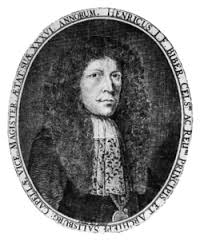 in Wartenberg, a small town in Bohemia which is now called Stráž pod Ralskem. Just to place Biber historically: he was seven years younger than Dieterich Buxtehude and nine years older than Arcangelo Corelli – and about 40 years older than J.S. Bach. Little is known about his childhood, but we do know that around 1668 he worked at the court of Prince Eggenberg in Graz, Austria, and two years later he was already in Kremsier, Moravia working for the Bishop of Olomouc. By then the 26 year-old Biber was already quite famous as a violin player. In 1670 Biber, without asking the Bishop’s permission, abruptly quit his employ and joined the court of the Archbishop of Salzburg. He stayed there for the rest of his life. Biber’s career flourished: he became the Kapellmeister in charge of all music making at the court of the Archbishop (100 years later the same court would employ the young Mozart), he was titled by the Emperor Leopold, and the Archbishop bestowed titles upon him. While in Salzburg, Biber wrote quite a bit of church music and even several operas, but the most famous works in his output is a collection of 16 pieces, 15 sonatas plus a Passacaglia for solo violin, known as either The Rosary Sonatas or the Mystery Sonatas; they were written around 1676. Here’s the first of the Sonatas, subtitled The Annunciation. It’s performed by Andrew Manze, violin and Richard Egarr, organ. Biber’s Passacaglia is probably the first significant piece ever written for the solo violin. You can listen to it here, performed by Reinhard Goebel. Biber’s music enjoyed great popularity, but soon after was overshadowed by Corelli’s. There has been a renaissance of it lately, though, especially after the commemoration of Biber’s death in 2004
in Wartenberg, a small town in Bohemia which is now called Stráž pod Ralskem. Just to place Biber historically: he was seven years younger than Dieterich Buxtehude and nine years older than Arcangelo Corelli – and about 40 years older than J.S. Bach. Little is known about his childhood, but we do know that around 1668 he worked at the court of Prince Eggenberg in Graz, Austria, and two years later he was already in Kremsier, Moravia working for the Bishop of Olomouc. By then the 26 year-old Biber was already quite famous as a violin player. In 1670 Biber, without asking the Bishop’s permission, abruptly quit his employ and joined the court of the Archbishop of Salzburg. He stayed there for the rest of his life. Biber’s career flourished: he became the Kapellmeister in charge of all music making at the court of the Archbishop (100 years later the same court would employ the young Mozart), he was titled by the Emperor Leopold, and the Archbishop bestowed titles upon him. While in Salzburg, Biber wrote quite a bit of church music and even several operas, but the most famous works in his output is a collection of 16 pieces, 15 sonatas plus a Passacaglia for solo violin, known as either The Rosary Sonatas or the Mystery Sonatas; they were written around 1676. Here’s the first of the Sonatas, subtitled The Annunciation. It’s performed by Andrew Manze, violin and Richard Egarr, organ. Biber’s Passacaglia is probably the first significant piece ever written for the solo violin. You can listen to it here, performed by Reinhard Goebel. Biber’s music enjoyed great popularity, but soon after was overshadowed by Corelli’s. There has been a renaissance of it lately, though, especially after the commemoration of Biber’s death in 2004
The English composer Maurice Greene was born on the same day, August 12th, but in London in 1696. Greene became an organist at the St.-Paul Cathedral, a prestigious position, in 1718. Around this time he and George Frideric Handel became good friends. Unfortunately, sometime later they had a tremendous fallout and, to quote the English music historian Charles Burney, “for many years of his life, [Handel] never spoke of [Greene] without some injurious epithet.” This row with Handel led Greene into the famous “Bononcini affair.” The Italian composer Giovanni Bononcini, Handel’s rival, was accused of plagiarism (he tried to pass Antonio Lotti’s madrigal as his own), but it was Greene who brought the madrigal to the public’s attention, trying to prop up Bononcini at Handel’s expense. Bononcini had to leave London, while Greene was forced to quit the Academy of Ancient Music, which he co-founded some years earlier. Fortunately for Greene, this episode didn’t affect his social position: some years later he was appointed organist and composer of the Chapel Royal. Herer’s one of Greene’s most famous anthems, Lord, Let Me Know Mine End. It’s performed by the Choir of Christ Church Cathedral with Stephen Farr on the organ.
The French composer Jacques Ibert was born on August 15th of 1890. His father was a successful trader and his mother a good amateur pianist. Jacques started studying the violin at the age of four and later took piano lessons. In his youth he supported himself as an accompanist and a cinema pianist. He took several courses at the Paris Conservatory and also attended private classes with André Gedalge, a teacher and composer. There he met Arthur Honegger and Darius Milhaud, two young composers who would later, together with Poulenc, Auric, Durey and Tailleferre form a group called Les Six. Ibert never joined in as during those years he stayed mostly away from Paris: during the Great War he was a naval officer and then, returning to Paris, he won the Prix de Rome on the first attempt and went to Italy. Ibert was an eclectic composer who used different styles. One of his early successes was a very impressionistic Escales (Ports of Call), inspired by his years in the Navy. The ports are Rome, Palermo, the exotic Nefta in Tunis and Valencia. Here it is, with Charles Munch conducting the Boston Symphony.
Sorabji and Pierné, the antipodes, were also born this week but will have to wait till next year.
PermalinkAugust 4, 2014. The Great War. We’d like to commemorate in our own small way, one of the most profound events in modern history, The First World War. It started 100 years ago with Austria-Hungary attacking Serbia in a reprisal for the assassination of Archduke Franz Ferdinand. Russia, Serbia’s ally, mobilized their armies. Other great powers – Germany, France and Britain – followed the suit. Very soon, events snowballed out of control: Germany invaded neutral Belgium and then France, Britain declared war against Germany, and a war that would last four years and result in 16 million deaths and 20 million wounded was on. Even though casualties for Russia and France were higher, Britain lost more composers on the front. George Butterworth joined the British army at the beginning of the war. At 29, he was known as a composer of great promise. His song cycle A Shropshire Lad and a short symphonic poem The Banks of Green Willow were premiered to critical acclaim in the year before the war (here it is, performed by the English String Orchestra, William Boughton conducting). Butterworth was killed on August 5th, 1916 during the terrible Battle of Somme, which saw more than 1,000,000 soldiers killed or wounded. Also killed was Cecil Coles, a young Scottish composer. Like Butterworth, Coles was a friend of Gustav Holst and Ralph Vaughan Williams. Holst didn’t serve, but Williams enlisted into the medical corps. His Third Symphony (Pastoral) was inspired by a bugle call he heard during the war and, in his own words, referenced the fields of France. And many years later Benjamin Britten wrote one of his finest compositions, the War Requiem, the text for which included poems of Wilfred Owen, written during the war. Owen was killed in November of 1918, one week before the end of the war; he was 25.
Of the French composers, Ravel was probably affected more than anybody else. He dreamed of being a military pilot, but his poor health and pretty short stature (he was 5’3) prevented him from joining the French Air Force. Instead, he became a truck driver and was stationed near Verdun. He found time to compose, and between 1914 and 1917 wrote a piano suite called Le tombeau de Couperin. The suite consists of six parts, and each one is dedicated to a friend who died in the war. The first piece, Prelude, is dedicated to First Lieutenant Jacques Charlot, who transcribed Ravel’s “Mother Goose”suite for piano solo. Charlot was killed in 1915; Debussy also dedicated to Charlot a section of his suite for two pianos En blanc et noir. Toccata, the last piece of Le tombeau, is dedicated to the memory of Captain Joseph de Marliave, husband of Marguerite Long. De Marliave was killed days after the beginning of the hostilities, in August of 1914. Marguerite Long played the premier of Le tombeau after the war. You can hear it in the performance by Alon Goldstein. In 1929, Ravel wrote a Piano Concerto for Left Hand for the pianist Paul Wittgenstein, who lost his right hand on the front (Leon Fleisher performs it here, Seiji Ozawa conducts Boston Symphony Orchestra).
In Germany and Austria-Hungary very little music was written during the war. Richard Strauss wrote his rather dull Alpine Symphony and even more boring opera Die Frau ohne Schatten. Arnold Schoenberg, who was then forty, was sent to the front and didn’t write anything of significance during the wartime. All that Anton Webern wrote during that time were several songs. The only composer to remain productive was Alban Berg. He served in the Austro-Hungarian army from 1915 to 1918, and while on leave in 1917 and 1918 he wrote large parts of his first masterpiece, the appropriately macabre opera Wozzeck.
Igor Stravinsky presents an interesting case. Some episodes of The Right of Spring, such as Dance of the Earth or Sacrificial Dance, seem to foreshadow the war (Le Sacre was written in 1913). On the other hand, most of the music written in neutral Switzerland, were Stravinsky’s family spent the war years, is simpler, lighter, often based on folk music. Such are his Les Noces (The Wedding), a “ballet with voices,” the opera-ballet Renard and the musical play L'Histoire du soldat. This development almost inevitably lead into his neoclassical period. The order, balance, the stillness of neoclassical music were a reflection of similar trends in visual arts. To a large extent these were reactions to the unpredicatbility, the anarchy and of course the terrible pain of the war. In Italy and Germany, neoclassical art very soon morphed into the art of fascism. Fortunately for us, abstract music escaped this path.Permalink
July 28, 2014. Guillaume Dufay. Around this time of year we celebrate the birthday of Guillaume Dufay, the most influential composer of the early Renaissance. Even though we usually know little about the early life of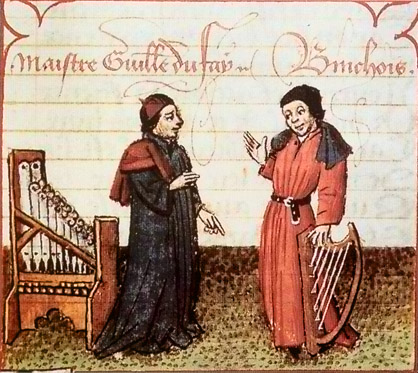 people who lived in the 14th or 15th centuries, tradition has it that Dufay was born on August 5th, 1397. We wrote about Dufay’s life when we celebrated his birthday a year ago, so this time we’ll write about his place in the European musical canon. This place is unique: Dufay was one of the last Medieval and at the same time one of the first Renaissance composers. The music of the medieval period centered in Northern France, in Avignon, where seven popes (and several anti-popes) lived during the 14th century, and in Italy. The first significant polyphonic music was written during that time. Guillaume de Machaut was the most famous poet and composer of the period; he lived in Reims and worked in its famous cathedral, the crowning place of the French kings. It was a time of tremendous upheavals. The Hundred years’ war, which started in 1337 and lasted till 1453, devastated France (Reims, for example, fell to the English in 1370 and was liberated by Joan of Arc only in 1429). All the while Burgundy, a war ally of England, prospered. Through marriage or war, Burgundians expanded their territory, acquiring Flanders, Brabant, and many smaller principalities. These were the circumstances under which the cultural center of northern Europe shifted from France to Burgundy. The dukes, all of them patrons of arts (and often active practitioners), didn’t maintain one court, as did the French and English kings: Dijon was their administrative capital, but the court moved around the country, staying in Brussels, Bruges, Arras and other northern cities more often than in Dijon. Court musicians moved with the dukes, and many of these places were the court stayed became centers of music making. Dufay was the elder, and most revered, composer in a group that also included John Dunstaple, Gilles Binchois and Antoine Busnois. These were the first of what we now call Renaissance musicians. They introduced new esthetic sensibilities, which during the following two hundred years led to the development of an incredibly rich musical culture. The roots of the music of Palestrina, Orlando di Lasso, the Gabrielis and William Bird, which so often appears quite modern even to our ear, all go back to Dufay and the Burgundians. Not that Dufay was a completely modern composer. For him music was not only about the sound, the melody, or the aural interaction of voices in a polyphonic piece. It was also an intellectual game, in which a theme hidden from the listener could be valued for the pattern it creates on a sheet of music. But these were the vestiges of medieval music, famous for its complex arrangements, often more mathematical than esthetic. What his contemporaries valued the most were his melodic gifts, the beautiful polyphony of his masses, and the lively and graceful rhythms of some of his chansons.
people who lived in the 14th or 15th centuries, tradition has it that Dufay was born on August 5th, 1397. We wrote about Dufay’s life when we celebrated his birthday a year ago, so this time we’ll write about his place in the European musical canon. This place is unique: Dufay was one of the last Medieval and at the same time one of the first Renaissance composers. The music of the medieval period centered in Northern France, in Avignon, where seven popes (and several anti-popes) lived during the 14th century, and in Italy. The first significant polyphonic music was written during that time. Guillaume de Machaut was the most famous poet and composer of the period; he lived in Reims and worked in its famous cathedral, the crowning place of the French kings. It was a time of tremendous upheavals. The Hundred years’ war, which started in 1337 and lasted till 1453, devastated France (Reims, for example, fell to the English in 1370 and was liberated by Joan of Arc only in 1429). All the while Burgundy, a war ally of England, prospered. Through marriage or war, Burgundians expanded their territory, acquiring Flanders, Brabant, and many smaller principalities. These were the circumstances under which the cultural center of northern Europe shifted from France to Burgundy. The dukes, all of them patrons of arts (and often active practitioners), didn’t maintain one court, as did the French and English kings: Dijon was their administrative capital, but the court moved around the country, staying in Brussels, Bruges, Arras and other northern cities more often than in Dijon. Court musicians moved with the dukes, and many of these places were the court stayed became centers of music making. Dufay was the elder, and most revered, composer in a group that also included John Dunstaple, Gilles Binchois and Antoine Busnois. These were the first of what we now call Renaissance musicians. They introduced new esthetic sensibilities, which during the following two hundred years led to the development of an incredibly rich musical culture. The roots of the music of Palestrina, Orlando di Lasso, the Gabrielis and William Bird, which so often appears quite modern even to our ear, all go back to Dufay and the Burgundians. Not that Dufay was a completely modern composer. For him music was not only about the sound, the melody, or the aural interaction of voices in a polyphonic piece. It was also an intellectual game, in which a theme hidden from the listener could be valued for the pattern it creates on a sheet of music. But these were the vestiges of medieval music, famous for its complex arrangements, often more mathematical than esthetic. What his contemporaries valued the most were his melodic gifts, the beautiful polyphony of his masses, and the lively and graceful rhythms of some of his chansons.
Speaking of gracefulness: here is a good example, Dufay’s three-voiced hymn Ave Maris Stella ("Hail, star of the ocean"). It’s performed by the ensemble Pomerium under the direction of Alexander Blachly. And here is his Ballata “Resvellies Vous.” Dufay also used the melody to write an eponymous mass of which we can hear the first two parts, Kyrie and Gloria. All three of these pieces are performed by the ensemble Cantica Symphonia, conducted by Giuseppe Maletto.Permalink
July 21, 2014. From recent uploads. The American pianist Sean Chen was born in 1988 in Margate, Florida. He received his Bachelor’s and Master’s degrees at Juilliard. While at school he won the 2010 Gina Bachauer Piano Competition,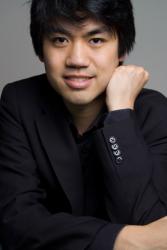 the 2010 Munz Scholarship, and first prize at the 2008 Juilliard Concerto Competition. 2013 was good for Mr. Chen: he won the American Pianists Association’s DeHaan Classical Fellowship and also the Third Prize at the 14th Van Cliburn International Piano competition. He has appeared as a soloist with several symphonies, among them the Indianapolis Symphony Orchestra under Gerard Schwarz, the Fort Worth Symphony Orchestra under Leonard Slatkin, and Indianapolis Chamber Orchestra. In 2014 he received the Artist Diploma at the Yale School of Music after studying with Hung-Kuan Chen and Tema Blackstone. You can listen to Mr. Chen’s lyrical and elegant interpretation of Chopin’s four Impromptus: Impromptu in A-flat Major, Op.29; Impromptu in F-Sharp Major, Op. 36; Impromptu in G-flat Major, Op. 51; and Fantaisie-Impromptu in C-Sharp minor, Op. 66 (it’s interesting to note that Chopin didn’t want Fantaisie-Impromptu to be published: the dedicatee and a friend, Julian Fontana, did it against his wishes. It became, as we know, one of Chopin’s most popular pieces).
the 2010 Munz Scholarship, and first prize at the 2008 Juilliard Concerto Competition. 2013 was good for Mr. Chen: he won the American Pianists Association’s DeHaan Classical Fellowship and also the Third Prize at the 14th Van Cliburn International Piano competition. He has appeared as a soloist with several symphonies, among them the Indianapolis Symphony Orchestra under Gerard Schwarz, the Fort Worth Symphony Orchestra under Leonard Slatkin, and Indianapolis Chamber Orchestra. In 2014 he received the Artist Diploma at the Yale School of Music after studying with Hung-Kuan Chen and Tema Blackstone. You can listen to Mr. Chen’s lyrical and elegant interpretation of Chopin’s four Impromptus: Impromptu in A-flat Major, Op.29; Impromptu in F-Sharp Major, Op. 36; Impromptu in G-flat Major, Op. 51; and Fantaisie-Impromptu in C-Sharp minor, Op. 66 (it’s interesting to note that Chopin didn’t want Fantaisie-Impromptu to be published: the dedicatee and a friend, Julian Fontana, did it against his wishes. It became, as we know, one of Chopin’s most popular pieces).
The violinist Yoo Jin Jang was born in Korea in 1990 and made her orchestral debut at the age of 10 with the KBS Symphony Orchestra. She received her Bachelor of Music degree from the Korean National University of Arts, and a Master of Music and Graduate Diploma from the New England Conservatory, where she studied with Miriam Fried. Currently she’s pursuing her Artist Diploma at the same school. In 2013, she won the 4th International Munetsugu Violin Competition (Shlomo Mintz was chairing the jury) and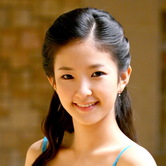 received on loan for two years the 1697 “Rainville” Stradivari violin. In 2010 she was the grand prix winner at the “Tchaikovsky’s Homeland” International Competition for Young Musicians, held in the cities of Izhevsk and Votkins, the birthplace of the composer. She also successfully participated in a number of international competitions. In March of 2014 she was in Chicago, playing at the Dame Myra Hess memorial concert. In her program were Four Romantic Pieces, Op.75 by Antonin Dvořák and Sonata for Violin and Piano by John Corigliano. Here’s what the composer writes about it: "The Sonata for Violin and Piano, written during 1962-63, is for the most part a tonal work, although it incorporates non-tonal and poly-tonal sections within it as well as other 20th century harmonic, rhythmic and constructional techniques. The listener will recognize the work as a product of an American writer, although this is more the result of an American writing music than writing ‘American’ music — a second-nature, unconscious action on my part." Here it is; Ms. Jang is accompanied by the pianist Renana Gutman.
received on loan for two years the 1697 “Rainville” Stradivari violin. In 2010 she was the grand prix winner at the “Tchaikovsky’s Homeland” International Competition for Young Musicians, held in the cities of Izhevsk and Votkins, the birthplace of the composer. She also successfully participated in a number of international competitions. In March of 2014 she was in Chicago, playing at the Dame Myra Hess memorial concert. In her program were Four Romantic Pieces, Op.75 by Antonin Dvořák and Sonata for Violin and Piano by John Corigliano. Here’s what the composer writes about it: "The Sonata for Violin and Piano, written during 1962-63, is for the most part a tonal work, although it incorporates non-tonal and poly-tonal sections within it as well as other 20th century harmonic, rhythmic and constructional techniques. The listener will recognize the work as a product of an American writer, although this is more the result of an American writing music than writing ‘American’ music — a second-nature, unconscious action on my part." Here it is; Ms. Jang is accompanied by the pianist Renana Gutman.
And finally, a performance by the newly formed (2012) Aizuri String Quartet. Even though the ensemble is very young, its members – violinists Miho Saegusa and Zoë Martin-Doike, Ayane Kozasa (viola), and Karen Ouzounian (cello) – are seasoned professionals who have won top prizes in such competitions as the Primrose International Viola Competition and Astral Artists National Auditions. They have collaborated with such artists as Pamela Frank, Miriam Fried, Richard Goode, Kim Kashkashian and Mitsuko Uchida. They studied together at The Curtis Institute of Music and The Juilliard School. Even prior to forming the quartet these musicians collaborated at many chamber music festivals, Marlboro, Caramoor and the Ravinia Festival’s Steans Music Institute among them. The Quartet gave its debut performance at the Tertulia Chamber Music series in New York City, and participated in the 2013 Juilliard String Quartet Seminar. Although new, the Quartet has been named the String Quartet-in-Residence at the Curtis Institute of Music beginning in September 2014, and this summer was the Quartet-in-Residence at the Ravinia Festival’s 2014 Steans Music Institute. It’s at one of the Steans concerts that they recorded Haydn’s Quartet in B-flat Major, Op. 64, no. 3. You can listen to it here.
PermalinkJuly 14, 2014. Jacob Clemens non Papa. No big names this week, so we’ll go back some centuries and celebrate the Franco-Flemish composer Jacob Clemens non Papa. Jacob Clemens was born around 1510, a generation before Orlando di Lasso. He was probably born in Ypres, Flandres, the place now infamous for three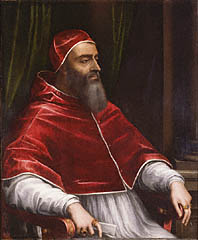 horrible World War I battles and the first case in history when a poison gas was used on a large scale (another name for mustard gas is Yperite, after the city). At the time of Clemens’s birth, though, Ypres was a prosperous town, the third largest in Flandres after Bruges and Ghent and famous for its cloth trading. Nothing is known about Clemens’s early years, but he probably spent some time in Paris in the 1530s as a collection of his chansons was published there around that time. He sung in Bruges in 1544-45 and then moved to Antwerp where he struck a friendship with Tielman Susato, the famous music publisher and composer (several years earlier Susato founded a publishing house which used a press with the movable music type, the first in Flanders or the Low Countries). Later Susato would publish Clemens’s most famous work: his setting of all 150 psalms called Souterliedekens (Little Psalter Songs in Flemish). Souterliedekens were originally published in 1540 and were simple monophonic settings of the popular songs of the day. About 15 years later Clemens used these tunes to created short but beautiful polyphonic pieces, usually for three or four voices. Here, for example, is his setting of Psalm 31, performed by the Dutch ensemble Camerata Trajectina.
horrible World War I battles and the first case in history when a poison gas was used on a large scale (another name for mustard gas is Yperite, after the city). At the time of Clemens’s birth, though, Ypres was a prosperous town, the third largest in Flandres after Bruges and Ghent and famous for its cloth trading. Nothing is known about Clemens’s early years, but he probably spent some time in Paris in the 1530s as a collection of his chansons was published there around that time. He sung in Bruges in 1544-45 and then moved to Antwerp where he struck a friendship with Tielman Susato, the famous music publisher and composer (several years earlier Susato founded a publishing house which used a press with the movable music type, the first in Flanders or the Low Countries). Later Susato would publish Clemens’s most famous work: his setting of all 150 psalms called Souterliedekens (Little Psalter Songs in Flemish). Souterliedekens were originally published in 1540 and were simple monophonic settings of the popular songs of the day. About 15 years later Clemens used these tunes to created short but beautiful polyphonic pieces, usually for three or four voices. Here, for example, is his setting of Psalm 31, performed by the Dutch ensemble Camerata Trajectina.
In the 1550 he went to 's-Hertogenbosch, the city where one hundred years earlier Hieronymus Bosch was born. There, a local religious confraternity employed him as a singer and composer (it’s interesting that Bosch had been a member there). Jacob Clemens died (according to some sources a violent death) just five years later; he was 45 years old. One place Clemens never went to was Italy. That’s very unusual for a composer of his stature: practically all Franco-Flemish composers of his and even earlier generations – Jacob Obrecht, Josquin des Prez, Adrian Willaert, Jacques Arcadelt – spent at least some time in Italy, even before Palestrina, Orlando di Lasso and Tomás Luis de Victoria made it into the center of the musical world.
Even though his life was short, the prolific Clemens wrote a large amount of music, most of it sacred. 15 masses are extant, and the same number of Magnificats; he also wrote more than 200 motets and of course the abovementioned 150 settings of the Psalms. His secular music is mostly in the form of chansons, very popular at the time. Here is the Introit from his beautiful Requiem Mass. It’s performed by the Capella Palestrina, Maarten Michielsen conducting. And here is an excerpt from another mass by Jacob Clemens: Sanctus and Benedictus from Missa Pastores Quidnam Vidistis. Tallis Scholars are lead by Peter Phillips.
So why was Jacob Clemens called “non Papa” (not the Pope)? We don’t really know. Some suggested that the moniker was added to distinguish him from the Pope Clement VII (Giulio de’Medici, son of Giuliano, who, with his brother Lorenzo, co-ruled Florence), but it’s highly unlikely that anybody would mistake a Flemish composer for a pope. In addition, Clement VII died in 1534, when Jacob Clemens was in his 20s and still practically unknown. Most likely “non Papa” was added in jest, maybe by his friend Susato, and it stuck. There are no surviving portrait of “non Papa,” but in 1531 Sebastiano del Piombo, a friend of Michelangelo, created a fine portrait of Clement VII and you can see it above.
Permalink